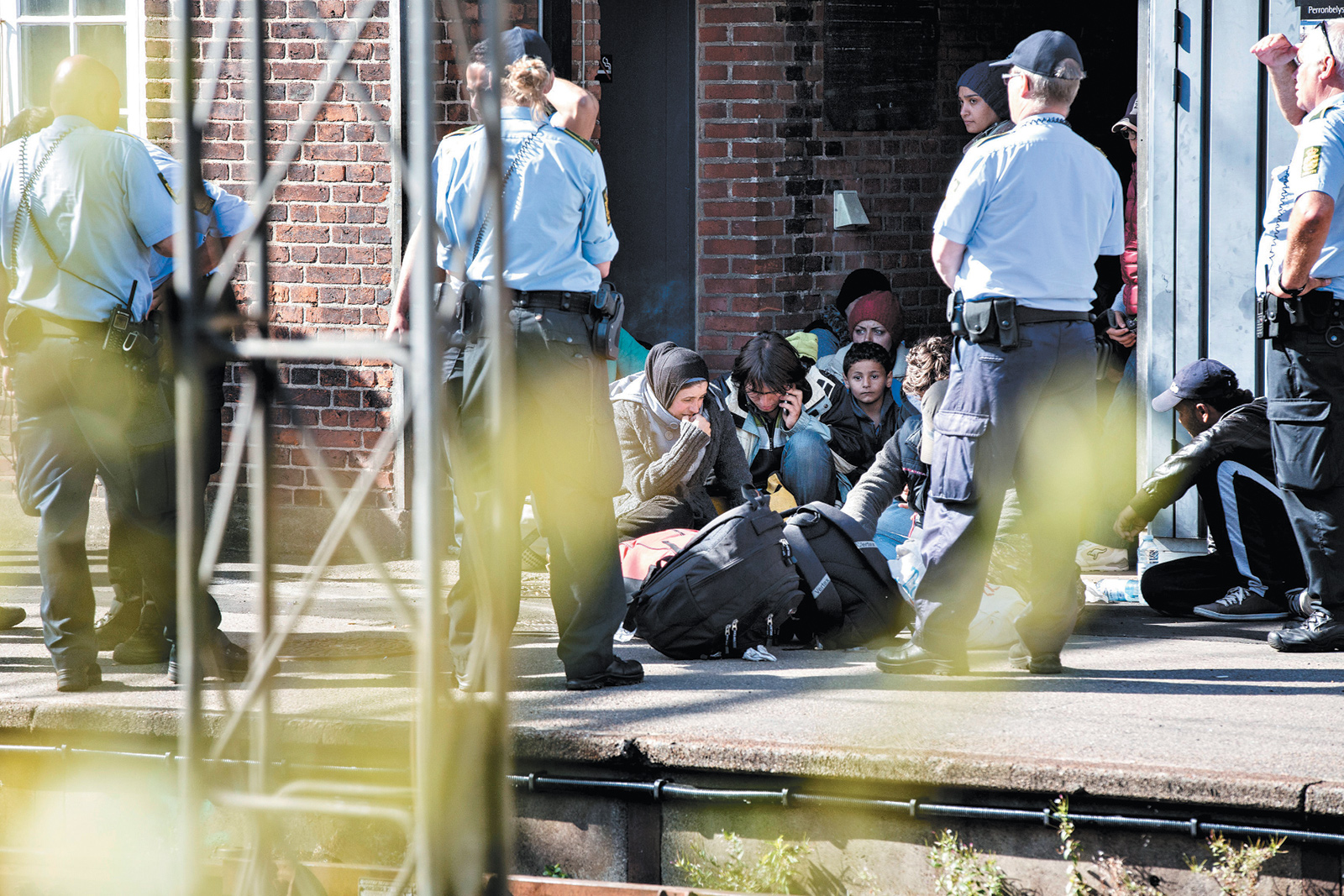To the Editors:
In “Liberal, Harsh Denmark” [NYR, March 10] Hugh Eakin cites a study of racism in the European Union that labels Denmark as the most racist population on the continent. Some of Mr. Eakin’s sources indicate that this appalling trend is being reinforced by uninhibited hate speech targeting immigrants and refugees, especially Muslims.
Among Mr. Eakin’s sources is human rights lawyer Niels-Erik Hansen, who says that Denmark’s hate speech ban is rarely enforced. In fact, the opposite is true, which is part of a broader European trend. Since the 1980s every decade has seen an increase in hate speech cases. In 2015 at least two people have been convicted. In one case a man was convicted for comparing Islam and Nazism and criticizing Islamists. Another man was charged preliminarily for burning a copy of the Koran. Not only is there a growing number of hate speech cases, the scope of Denmark’s hate speech ban now seems to include blasphemy, for which no one has been convicted in seventy years. Even Politiken’s editor in chief, Bo Lidegaard, whom the article quotes as criticizing the publication of the Muhammad cartoons, has denounced the conviction for comparing Nazism and Islam.
It is true that Denmark, like the vast majority of European countries, has huge difficulties integrating newcomers. Eakin refers to a “ghetto list” of more than thirty neighborhoods with high crime rates and badly integrated immigrants. This is certainly a worrying figure, but it is quite low compared to Sweden, which according to a recent report has 186 such ghettos.
Mr. Eakin asserts that when it comes to refugees “Denmark has long led the continent in its shift to the right.” It is true that Denmark is having a tough debate on immigration, integration, and Islam, but despite aiming to limit the number of asylum-seekers, Denmark still receives more refugees per capita than the EU average.
The article cites a 1997 study of racism in the EU labeling Denmark “the most racist of any European population.” It seems odd to use a twenty-year-old report when more recent studies exist. A 2011 study conducted over three decades shows that Danes have become increasingly more tolerant toward immigrants. A 2015 report by the OECD and the EU Commission shows that immigrants in Denmark don’t feel particularly discriminated against compared to other European countries. In Sweden 12 percent of immigrants say that they have experienced discrimination; the figure for Denmark is 14 percent, the same as the European average. When it comes to young people of immigrant parents, but born and raised in a European country, only 13 percent of Danes said they at some point had been subjected to discrimination, in Sweden 11 percent answered in the affirmative, while the figures for the Netherlands, Austria, France, and Great Britain were 37 percent, 34 percent, 27 percent, and 23 percent, respectively. Moreover, Sweden experiences much more right-wing extremist violence than Denmark. A 2015 Norwegian study suggests that Sweden’s constrained debate on immigration may be a contributing factor.
Jacob Mchangama
Justitia Copenhagen, Denmark
Flemming Rose
Copenhagen, Denmark
Hugh Eakin replies:
No one has had a more central part in the defense of free speech in Denmark and Europe than Flemming Rose, and his continued efforts to defend unfettered expression and open debate, in the face of threats to his life, are courageous. However, I am less certain than he and his colleague that “Danes have become increasingly more tolerant toward immigrants.”
Apart from adopting some of the most restrictive asylum and refugee policies in Europe, Denmark has been repeatedly scrutinized in recent years for its strident public rhetoric toward immigrants and its scant enforcement of hate crime laws. In May 2015, in its “Concluding Observations on…Denmark,” the UN Committee on the Elimination of Racial Discrimination (CERD) wrote:
The Committee is concerned…that 45% of people with ethnic minority background felt they experienced discrimination based on their ethnicity according to the National Integration Barometer. It is further concerned about the low number of court cases on hate crimes, despite the abovementioned data and the guidelines issued by the Director of Public Prosecutions for the Police to better handle hate crimes.
Referring to the then-upcoming 2015 election that brought the current Danish government to power, the committee added that it “notes with concern the increase of xenophobia and political propaganda targeting non-citizens.”
These findings support the earlier conclusions of the European Commission Against Racism and Intolerance (ECRI), which in its own most recent report on Denmark, in 2012, noted that “very few [hate crime] cases are brought to the court…, although hate speech against Muslims in particular, especially by some politicians, has been a prevalent problem since ECRI’s third report.” It also wrote that “those convicted under this provision are usually only required to pay a small fine.”
Advertisement
In part because of poor enforcement by Danish authorities, Danish human rights lawyers have appealed several cases involving alleged racial discrimination against Iraqi, Somali, and other foreign-born residents to the UN’s CERD. According to UN statistics, more such cases have been decided against Denmark than against any other country in the world.
The reason I cited the 1997 study of Denmark by the European Monitoring Centre on Racism and Xenophobia was to show the unusual social forces in play during the years leading up to the government’s dramatic shift to the right, when the anti-immigrant and anti-Islam Danish People’s Party first gained wide support. As I wrote in my article, Denmark’s restrictive approach to immigration and asylum has notably corresponded with a robust defense of extraordinary social welfare benefits for all Danes—including those immigrants who are able to obtain citizenship.
This, along with comparatively small numbers of new arrivals, may account for Denmark’s relative success up to now in avoiding the social problems of its neighbor Sweden, which has taken in far higher numbers of refugees. It seems doubtful, however, that Denmark can remain so restrictive to outsiders without affecting Danish attitudes toward its foreign-born population at home.




